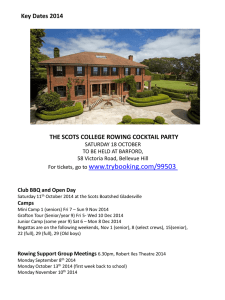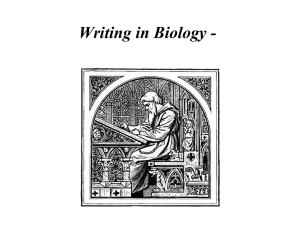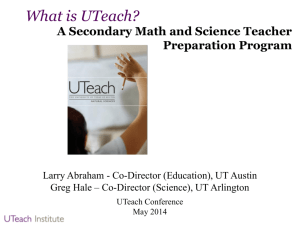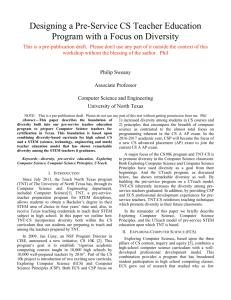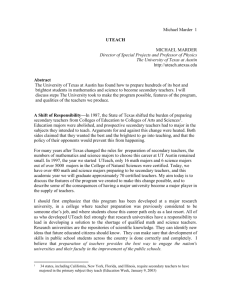Mary Ann Rankin, University of Maryland, College Park
advertisement
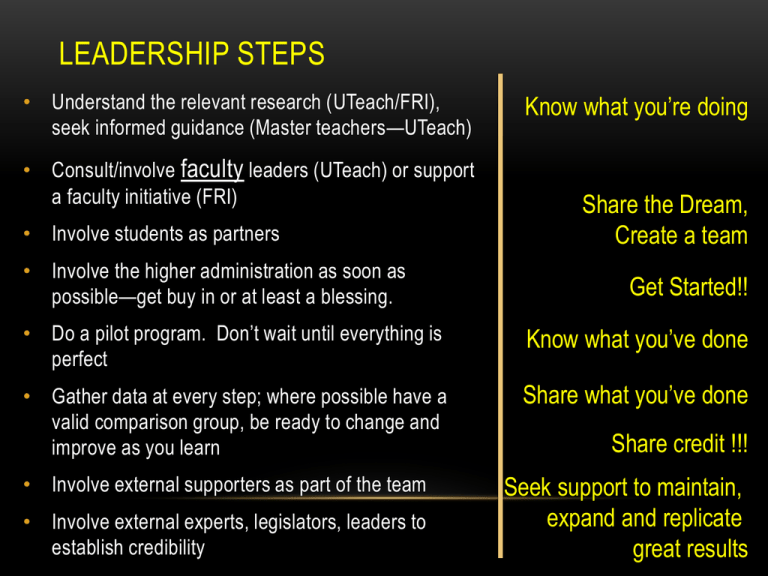
LEADERSHIP STEPS • Understand the relevant research (UTeach/FRI), seek informed guidance (Master teachers—UTeach) • Consult/involve faculty leaders (UTeach) or support a faculty initiative (FRI) • Involve students as partners • Involve the higher administration as soon as possible—get buy in or at least a blessing. Know what you’re doing Share the Dream, Create a team Get Started!! • Do a pilot program. Don’t wait until everything is perfect Know what you’ve done • Gather data at every step; where possible have a valid comparison group, be ready to change and improve as you learn Share what you’ve done • Involve external supporters as part of the team • Involve external experts, legislators, leaders to establish credibility Share credit !!! Seek support to maintain, expand and replicate great results Composite UTOP Score TEACHER EFFECTIVENESS 5 UTeach Non-UTeach 4 3 2 1 0-33% 33%-66% 66%-100% % Students Eligible Reduced Lunch UTEACH RECOGNITION/REPLICATION • Uteach Task Force, UT College of Natural Sciences Foundation Advisory Coucil • National Academy recognition • Gathering Storm Report • NMSI formed • ExxonMobil, Dell gifts • Race to the Top funding • HHMI EDUCATION THROUGH RESEARCH: RESEARCH THROUGH EDUCATION The Freshman Research Initiative: UT Austin 12 Course Sequence & Timeline Freshman Fall Spring Research Methods Intro to Stream Lab Techniques Intro to Research and Analysis Stream Selection Counts as Signature Course *Optional Begin Research Counts as a Lower Division Lab Course Sophomore Summer* Summer Research Fellowship Summer School Credit Headstart on Fall Research Fall Stream Research Spring* Research Publication/ Presentation Credit for Independent Mentor Research Research Expand & Methods Complete Join faculty Stream Project labs, REUs, Counts as internships Upper Division Lab Course 13 Research Stream Name Faculty Leader(s) Discipline(s) # 1st Spring Vertebrate Interactome Mapping Scott Stevens Molecular Biology 35 2006 Aptamer Selection Andy Ellington Biochemistry / Biology 35 2006 Nanomaterials for Chemical Catalysis Stevenson/Vanden Bout/Crooks Chemistry 30 2006 Supramolecular Sensors Eric Anslyn Chemistry 30 2007 Biobricks Karen Browning Biochemistry 35 2007 Discovery Lab in Plant Biology Stan Roux Biology 28 2007 Autonomous Vehicles Peter Stone Computer Science 15 2007 Computational Intelligence in Game Design Risto Miikkulainen Computer Science 20 2007 Frontiers of Liner Algebra Library Dev. Robert van de Geijn Mathematics/Computer Science 5 2007 Viral Evolution Jim Bull Biology 35 2008 Mitochondrial Gene Expression Dean Appling Biochemistry / Molecular Biology 35 2008 Virtual Drug Screening Jon Robertus Biology/Computer Science 30 2008 Computational Nanoparticles Graeme Henkelman Chemistry/Computer Science 25 2008 Electronic and Magnetic Materials Research John Markert Physics 15 2008 Peptide Mimics to Study Binding Energetics Stephen Martin Chemistry 33 2009 New Functional Materials & X-Ray Crystallography R. Jones, B. Holliday Chemistry 25 2009 Functional Genomics Vishwanath Iyer Biology 35 2009 Cell Fate Regulation Alan Lloyd Biology 35 2009 The Search for Dark Matter Don Winget Astronomy 8 2009 Computational Biology: Studying Disease Dynamics Wilke /Meyers Biology/Computer Science 25 2009 14 Impact on Retention in Science and Math 45% College of Natural Science (CNS) retention data for the FRI-07 cohort and associated comparison group, plotted over a five year period so that the average five-year retention data can be shown in comparison. 45-85% increase in retention rates Comparison groups are formed for each year from freshman not in FRI, who meet the same FRI requirements The resulting comparison group is: • 85% • • Statistically indistinguishable in terms of predicted first semester GPA Demographically similar to FRI students Comparable in number of risk students included 15 4-YR GRADUATION RATES COMPARED 16 FRI Graduates Pursuing PhD/MD-PhD 14% 7% 32% FRI students 24% 7% 16% 7% 23% 9% comparison 1% group 2% FRI06 CNS non-honors graduates (N=57) Graduate school MD/PhD,MPH Medical School Allied Health Prof Other (JD, MBA, etc) Applying for schools Job, Job search Unknown 18% 8% 19% 12% 15% 26% 1% CMP06 CNS non-honors graduates (N=146) 17 MORE SCIENCE PRODUCED Number of papers Papers on stream research Number of student authors Number of Risk student authors Number of Risk student authors other than strictly female In preparation 12 8 16 8 3 Submitted 4 4 23 21 11 In press 4 4 11 6 3 Published 31 18 44 24 9 Total 50 33 94 59 26 Annual Report 2010: Cumulative (2005-2010) list of refereed journal publications co-authored by FRI student participants 18 FRI RECOGNITION/REPLICATION • HHMI Funding • NSF Funding • FRI Task Force, UT College of Natural Sciences Foundation Advisory Council • BHEF recognition • PCAST recognition • HHMI replication LEADERSHIP STEPS • Understand the relevant research (UTeach/FRI), seek informed guidance (Master teachers—UTeach) • Consult/involve faculty leaders (UTeach) or support a faculty initiative (FRI) • Involve students as partners • Involve the higher administration as soon as possible—get buy in or at least a blessing. Know what you’re doing Share the Dream, Create a team Get Started!! • Do a pilot program. Don’t wait until everything is perfect Know what you’ve done • Gather data at every step; where possible have a valid comparison group, be ready to change and improve as you learn Share what you’ve done • Involve external supporters as part of the team • Involve external experts, legislators, leaders to establish credibility Share credit !!! Seek support to maintain, expand and replicate great results • • • • • Connects undergraduates with authentic, advanced research projects from the beginning of their first semester on campus as part of their regular course of study Provides a better learning experience for students that keeps them in STEM instead of driving them away!!!!! Shows students the excitement of discovery, provides experience with cutting edge technology and prepares them for additional hands-on experience in labs or internships Gives students access to faculty mentors and the community of science Is scalable, both in numbers and disciplines, and makes a unique, authentic research experience available to a large portion of the freshman class. - • • • - Over 6 years > 2300 freshman have participated Again in 2011-12, > 650 students enrolled in FRI, 33% of the incoming Natural Sciences class,>40% from underrepresented groups 70 % still researching at the end of their 4th year Merges the twin missions of a research university: Research and Education Is especially effective with students not traditionally well-represented in science practice Retains and helps our students succeed in a science, technology or mathematics degree plan and ecruits them to scientific careers 21 5-YEAR GRADUATION RATES COMPARED 22 RESEARCH ACTIVITIES OF FRI STUDENTS After 2 years 2% 12% 9% 49% 16% After 4 years FRI Research and/or Mentoring 12% Research with FRI 5% Professor Research with outside 17% 18% 11% 5% research group Intention to return to research in future 5% 39% No plans to continue research Non-responders Graduated 67% Continuing in Research for 4 years 24 25 26
